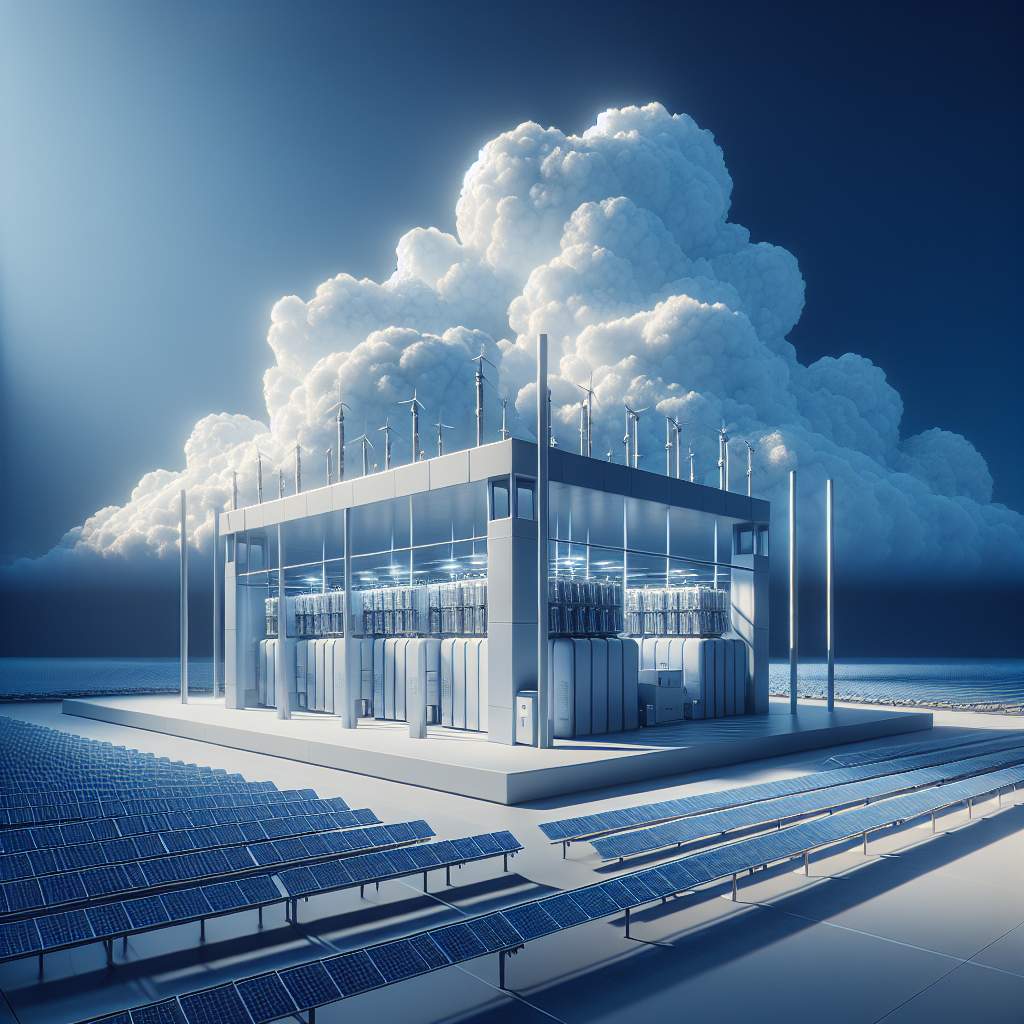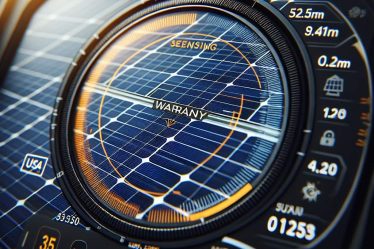
Looking to harness the power of the sun, store that energy for a rainy day, and reduce your carbon footprint? Well, look no further! Solar Energy Storage Solutions are here to revolutionize how we use renewable energy. Imagine being able to capture the sun’s rays during the day and keep that power for when the clouds roll in or even at night. It’s like having your own little piece of sunshine on standby! In this article, we’ll dive into the ins and outs of solar energy storage systems and why they’re a game-changer in the world of sustainable energy. Let’s shed some light on this bright idea!
Introduction to Solar Energy Storage Solutions
Hey there! If you’re looking to level up your solar energy system, solar energy storage solutions might just be the missing piece. Picture this: you’ve got your panels soaking up all that glorious sunshine, but what about when the sun takes a break? That’s where solar energy storage systems swoop in to save the day.
First off, let’s talk batteries. These bad boys are like the superheroes of solar storage. They soak up excess energy generated during peak sunlight hours and store it for later use when the clouds roll in or at night. It’s like having your own little power reserve right at home.
Now, onto inverters – these nifty devices convert the direct current (DC) electricity produced by solar panels into usable alternating current (AC) electricity for your home. Think of them as the translators between your solar setup and household appliances.
And hey, don’t forget about smart meters! These tech wonders keep tabs on how much energy you’re using and help optimize your consumption patterns for maximum efficiency.
So there you have it – with proper solar energy storage solutions
Benefits of Solar Energy Storage
Solar energy storage is a game-changer. With solar battery systems, excess energy generated during the day can be stored for use at night or on cloudy days. This means more control over your energy usage and less reliance on the grid.
One key benefit of solar energy storage is increased energy independence. By storing surplus power, homeowners and businesses can reduce their dependence on traditional energy sources and have a reliable backup during outages.
Solar storage can lead to significant cost savings. By using stored solar energy during peak times when electricity rates are high, users can lower their overall energy bills.
In addition, having a solar battery system can contribute to a more sustainable future by reducing carbon emissions. It’s an investment in both personal savings and environmental stewardship.
With advancements in technology, solar batteries are becoming more efficient and affordable. This paves the way for wider adoption and integration of renewable energy sources into our daily lives.
- Increased Energy Independence
- Cost Savings through Peak Time Usage
- Reduction in Carbon Emissions
- Advancements in Technology
Embracing solar energy storage brings multiple benefits – from financial savings to reduced environmental impact.
Types of Solar Energy Storage Systems
When it comes to storing solar energy, there are various types of solar energy storage systems that can be used in combination with solar panels. One popular option is the battery storage system, which allows excess energy generated by the solar panels to be stored for later use. Another common choice is the thermal energy storage system, which stores heat collected from the sun and then converts it into usable energy when needed.
Battery Storage System
A battery storage system works like a rechargeable battery for your home, capturing and storing excess electricity generated by your solar panels during sunny days for use at night or on cloudy days. These systems typically use lithium-ion batteries due to their high energy density and long lifespan.
Thermal Energy Storage System
In contrast, a thermal energy storage system captures heat from the sun using materials such as molten salt or phase change materials. This heat can then be used to generate power through steam turbines or provide heating for homes and businesses even when the sun isn’t shining.
Key Components of Solar Energy Storage Systems
When it comes to solar energy storage systems, batteries are the MVPs. These energy storage devices come in various types like lithium-ion, lead-acid, and flow batteries. They store excess solar power generated during the day for use at night or when the sun’s not shining. Another key player is the charge controller, which regulates the flow of energy from the solar panels to the batteries, preventing overcharging and damage.
Inverters also play a crucial role in solar energy storage systems. They convert direct current (DC) electricity from the solar panels and batteries into alternating current (AC) electricity used in homes and businesses. Additionally, monitoring systems keep an eye on energy production and consumption, helping users track their usage patterns and optimize their energy storage strategies.
These components work together seamlessly to ensure reliable access to clean energy day or night.
Factors to Consider When Choosing a Solar Energy Storage Solution

When deciding on a solar energy storage solution, it’s important to consider various factors. Cost is a significant consideration, as the initial investment and long-term savings differ among options. The capacity of the storage system needs to match your energy requirements, and its efficiency impacts how much solar energy it can store. The lifespan of the system influences its overall cost-effectiveness.
Another crucial factor is the safety of the storage solution, ensuring it meets industry standards for protection against overheating or electrical issues. Consider also the installation process, as some systems may require more complex setup than others.
Environmental impact plays a role too – choose an option with minimal environmental impact and recyclable components wherever possible. Additionally, consider any potential future expansion of your solar setup when selecting a storage solution.
In summary:
- Cost: Initial investment and long-term savings.
- Capacity:The system’s ability to meet your energy demands.
- Safety:A paramount concern for protecting your property and family.
- Lifespan:The overall longevity of the system affects its value.
Integration of Solar Energy Storage with Renewable Systems
When it comes to renewable energy, mixing solar panels with storage systems can be a game-changer. The integration of solar energy storage solutions with renewable systems like wind or hydro power opens up new possibilities for stable and reliable electricity supply. By storing excess solar power during the day in batteries for use at night, we are less dependent on weather conditions and the time of day.
The growth of solar energy storage technology also means more flexibility for homeowners and businesses. They gain independence from the grid, can save money by using stored solar power during peak times, and contribute to a cleaner environment.
Future Trends in Solar Energy Storage Technology
The future of solar energy storage technology looks bright. As advancements continue, we can expect improved efficiency and affordability in storing solar power for later use.
One exciting trend is the development of next-generation batteries. These batteries are designed to store more energy, last longer, and be safer for the environment.
Another trend to watch out for is smart grid integration. This technology allows solar systems to communicate with the grid, optimizing energy usage and reducing waste.
innovative materials are being researched to enhance energy storage capabilities. This includes new types of electrodes and electrolytes that could revolutionize how we store solar power.
Additionally, energy management software is becoming increasingly sophisticated. This software helps users monitor their energy consumption and optimize when they use stored solar power.
These trends indicate an exciting future for solar energy storage technology.
Environmental Impact and Sustainability of Solar Energy Storage
When we talk about solar energy storage, it’s all about reducing our carbon footprint and finding sustainable solutions for the future. Solar power has a big impact on the environment because it doesn’t release any harmful emissions, unlike fossil fuels. Plus, by storing solar energy in batteries, we can use it even when the sun isn’t shining, making it a reliable and sustainable option for powering homes and businesses.
The sustainability of solar energy storage is key to fighting climate change and protecting our planet for future generations. It helps us move away from non-renewable energy sources that harm the environment and towards a cleaner, greener future.
Conclusion: The Role of Solar Energy Storage in the Transition to Sustainable Energy
As we wrap up, it’s crystal clear that solar energy storage plays a pivotal role in the shift towards sustainable energy. With the ability to store excess energy generated during peak sunlight hours, solar battery systems ensure a stable power supply even when the sun takes a break. This not only reduces reliance on non-renewable sources but also strengthens grid resilience, paving the way for a greener and more reliable energy future.
In addition to enhancing reliability, solar storage solutions empower homeowners and businesses to take charge of their energy usage. By harnessing and storing solar power for later use, individuals can cut down on their electricity bills while contributing to a cleaner environment. Furthermore, as technology continues to advance and costs decrease, integrating energy storage with solar installations is set to become increasingly accessible and affordable.
As we navigate the complex landscape of sustainable energy solutions, it’s evident that solar energy storage holds immense promise in driving us towards a more sustainable future.
Questions and Answers
1. What are the benefits of solar energy storage solutions?
Solar energy storage solutions allow for the utilization of solar power even when the sun isn’t shining, providing reliable and sustainable energy.
2. How do solar energy storage systems work?
Solar energy storage systems store excess energy generated during daylight hours for use during periods of low or no sunlight, typically using batteries.
3. What types of batteries are commonly used in solar energy storage solutions?
Commonly used batteries include lead-acid, lithium-ion, and flow batteries, each with its own advantages and considerations for solar energy storage applications.
4. What factors should be considered when choosing a solar energy storage solution?
Factors to consider include capacity, efficiency, lifespan, cost, and the specific requirements of the intended application or system.
5. How can solar energy storage solutions contribute to sustainable energy practices?
Solar energy storage solutions enable greater self-sufficiency and resilience in renewable energy systems, reducing reliance on non-renewable sources and contributing to a more sustainable energy future.



